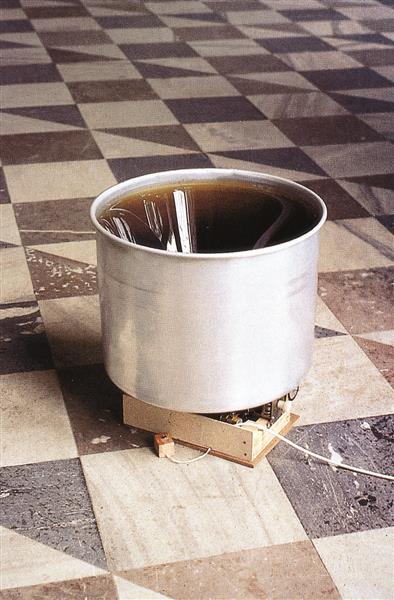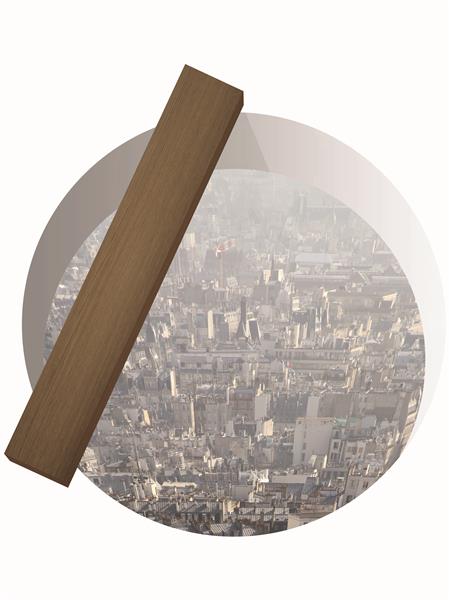Orange Space (Cambridge I), 2004
Attila Csörgő
black-and-white photograph, cut on a spiral, framed and as a spherical object on a metal pole
photograph: 50 × 130 cm (framed), spherical object: ø 20 cm
2004
Acquisition 2012
Inv. No. 0229 ab
There are two objects in the evn collection from the Warsaw dwelling, Hungarian artist.
One shows a rotatable barrel, filled with old oil – through the gyration, the surface of the oil is altered (The Maelström Project, 1995). The sticky fluid cloys to the wall, creating a half ellipse. Seen from above, it becomes a mirror-like parabola with a distorting image-effect. Csörgő is a mathematically thinking artist. Similar to Ernő Rubik, an architect who also comes from Budapest, he concerns himself with unique visualizations – space, stereometry, and the points of fracture between two and three dimensionality. During his stay as a scholar in Cambridge, England, Csörgő worked with a camera that made it possible for him to not only make a flat image of the world, but also to portray a spatial one. A camera that registers the complete surrounding space corresponds more to human perception than a right-angled extraction. The starting point for considering the phenomenon is the surface of an orange. The surface of a spherical object, as is generally known mathematically, can only be determined though irrational approximate values. Practically and geometrically, it is only measurable when the surface is peeled. From the converted surface emerges a spiral form or a loop with 2 curled-over ends. The ends specify the poles of the body (of the orange). Csörgősʼs camera is able, through a doubled rotary motion, to register such a complex image. Here one sees a forest in fleeting silhouette, an allusion to the art of drawing and the love of nature in English landscape painting.
Thomas D. Trummer, 2015 (translation: Virginia Dellenbaugh)
Continue readingPublications
evn collection. 95–2015 Jubilee, Vienna 2015, p. 94–97

